Enset: this ‘false banana’ might just help feed millions (more)
The Ethiopian crop could be even more fruitful than once thought
For Ethiopians, enset is nothing new. This root crop, a relative of the banana, is a staple that feeds more than 25 million people, nearly a quarter of Ethiopia’s population. It’s thought to have been grown and eaten in the southwestern parts of the country for thousands of years, although no one knows quite how many thousands (current research is looking into this, alongside why it was cultivated in the country’s southwest and who first began cultivating it). Meanwhile, the dishes and foods traditionally made from it – kocho, bulla and amicho – are recognised all over Ethiopia. Enset is as simple as the potato in the UK, for example, or cassava in Indonesia.
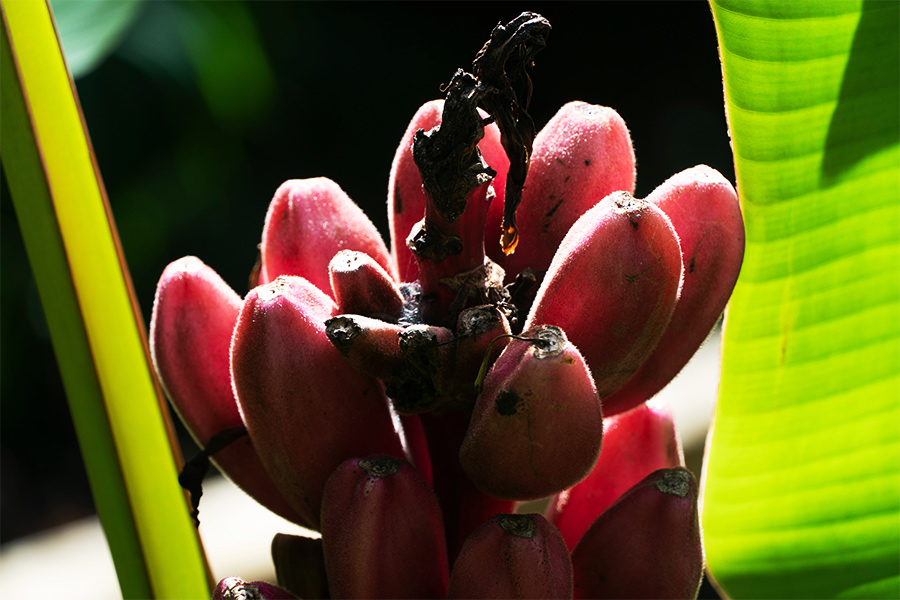
The enset plant / Image: Adobe Stock

And yet, it has been causing quite a stir of late. Enset has caught the attention of scientists in both the UK and Ethiopia thanks to its impressive durability, perenniality and potential to fight food insecurity, all of which have earned it the nickname ‘the tree against hunger’. A recent paper, for instance, has highlighted that it’s among the highest-yielding crops per hectare in the region, stores water so that it can survive extended drought (we’re talking years) and can be harvested at any time, unlike many other staple crops.
“That harvest flexibility is a hugely important factor and one of the things that makes enset so unique,” says Dr Wendawek Abebe of Hawassa University in Awasa, Ethiopia. “The other amazing thing about enset is that, although it’s currently cultivated in a very narrow region, it can actually grow in much wider agroecological zones. For example, you can find it growing 1,300m above sea level and up to as high as 3,300m. The fact that it can grow at these different gradients shows how resilient it is to environmental stress.”
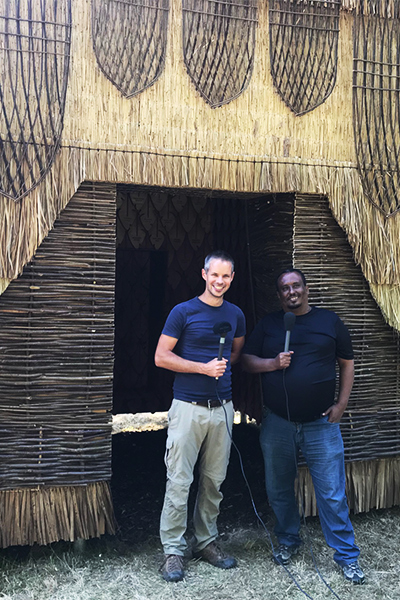
Dr James Borrell and Dr Wendawek Abebe at Royal Botanic Gardens, Kew
Enset is such a beneficial crop that Royal Botanic Gardens, Kew, in London, even had a special pavilion made out of. “It was an homage to the diversity of enset,” explains Dr James Borrell, a researcher at the gardens. “When we have Ethiopian people come to work with us at Kew, one thing they find amazing is that this mundane crop is a tourist attraction in the UK. It’s like British people being taken to see a potato and being told how good it is.”
The ‘false banana’, as the crop is commonly known, earned its nickname thanks to its physical resemblance to a banana plant, but with the fruit being inedible. It’s actually the pseudostem (the part of the plant that looks like a trunk, formed by overlapping leaf sheaths) and the corm (the bulbous underground stem base) that hold the good stuff.
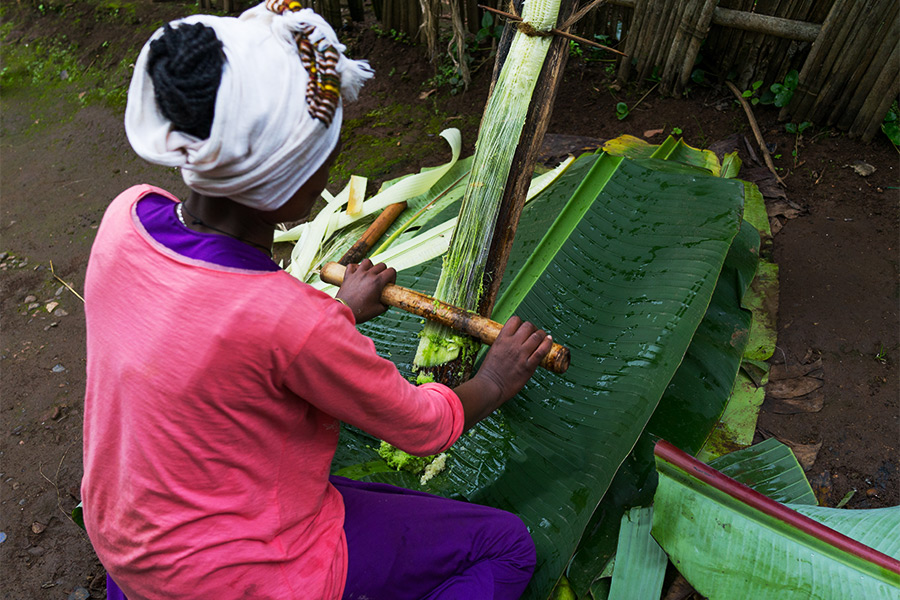
A Dorze woman prepares unleavened bread made from enset / Image: Getty Images

Both are fermented and then used to make a type of bread called kocho, or pulverised and concentrated into a flour – bulla – which is used to make dumplings, porridge and pancakes. The corms can also be boiled and eaten as amicho, in a similar way to other roots and tubers.
As a multipurpose plant, enset has many other uses besides food for humans, such as feed for livestock, ethnomedicinal uses, and even as fibre for making ropes, baskets, sacks and similar items.
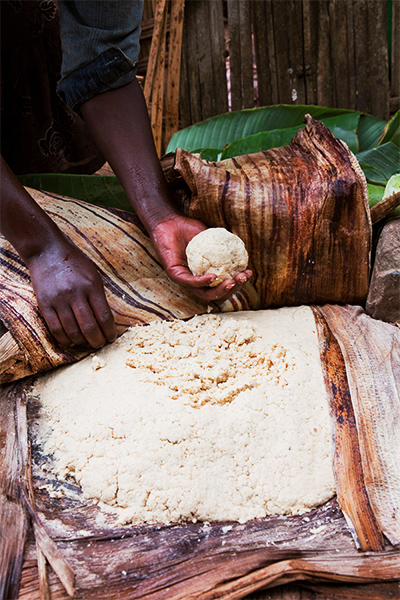
Preparing dough made from enset / Image: Getty Images
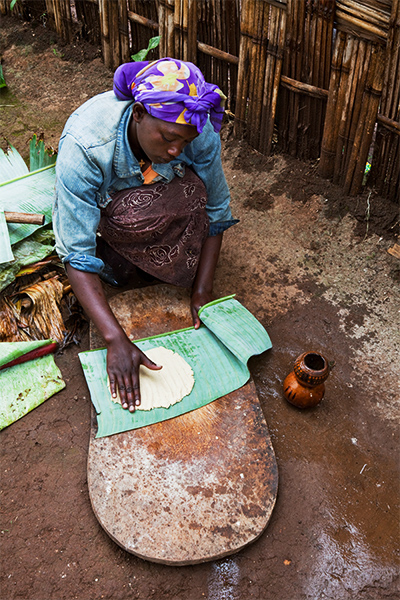
The kocho dough begins to take shape / Image: Getty Images
But although this versatile crop has many different applications, when it comes to enset’s nutritional benefits, there hasn’t been a lot of in-depth research, which is surprising for a crop that’s already feeding millions of people. What is known is that, while it lacks proteins and vitamin A, it’s high in carbs and minerals, such as calcium and iron. The latter is particularly beneficial in Ethiopia where there’s a high rate of anaemia, especially among women. Overall, though, it’s just a really great starch source that keeps you full. And it couldn’t hurt to have another crop like that, given that humans get more than 40% of their daily calories from just three crops: rice, wheat and maize.
So, the big question: if enset has the potential to seriously reduce food insecurity, why hasn’t its growth spread further across Ethiopia and even across the globe? In fact, wild enset already grows from Ethiopia down to as far as South Africa, but in order for it to be edible, it needs to be cultivated and processed in a specific way.

The next stage in making the flatbread-like kocho / Image: Getty Images

To harvest it, the whole plant must be pulled from the ground and a starchy substance in its pseudo-stem then needs to be removed, pulped and fermented in a pit underground for months at a time – sometimes years. As far as we know, enset has only ever been cultivated and domesticated in Ethiopia, by Ethiopians.
“The processing itself is an art. It’s indigenous knowledge that needs to be transferred from one community to another. Not just anybody can carry out these processes unless they’ve been trained,” explains Dr Wendawek Abebe. “Passing on that knowledge may well be a challenge, but it’s something we need to work towards, because enset is such an important crop in terms of food security. Once we’ve managed to do that within Ethiopia, we can look at expanding it outside the country too.”
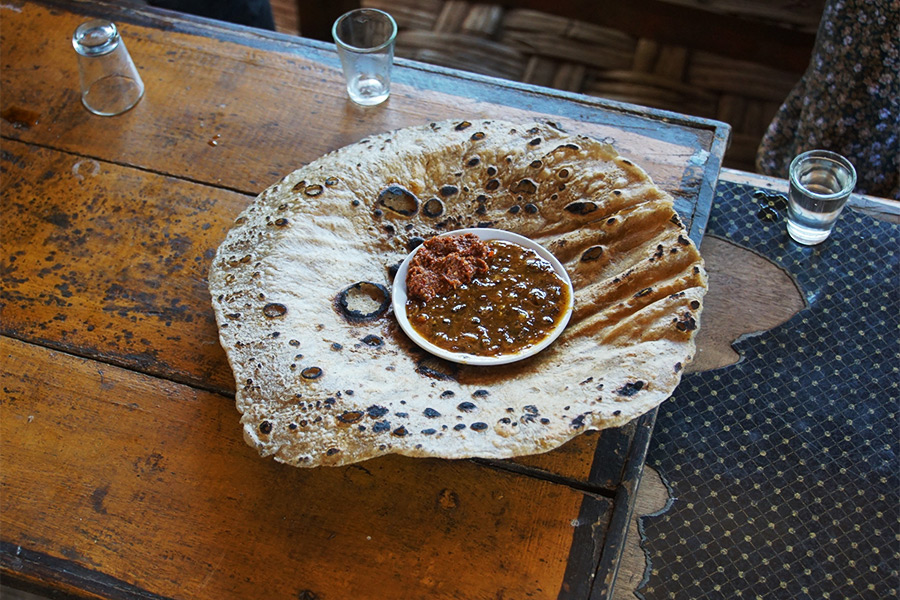
The finished product: traditional, freshly-baked kocho / Image: Getty Images

Until then, the focus is on protecting the false banana from climate change. The crop’s natural make-up means it’s relatively resistant to projected change but, like all plants, will have to adapt in some way. According to Dr James Borrell, one of the best things to do is work on conserving the incredible diversity of enset. Farmers have developed hundreds or even thousands of landraces (varieties), and all of these have slightly different uses, are suited to slightly different conditions, and are grown for different purposes. “Conserving that diversity is like giving people the best possible toolkit to tackle a future challenge,” Borrell says.
As remarkable as enset appears, perhaps it’s not the only crop that should be getting our attention. “It’s a really cool crop that captures peoples’ imaginations, but Ethiopia has loads of remarkable crops that no one’s ever heard of before. Enset is just one of many other crops that can help us meet challenges like climate change and food insecurity,” says Borrell. “Ethiopia is probably the most important country in Africa for crop diversity.”